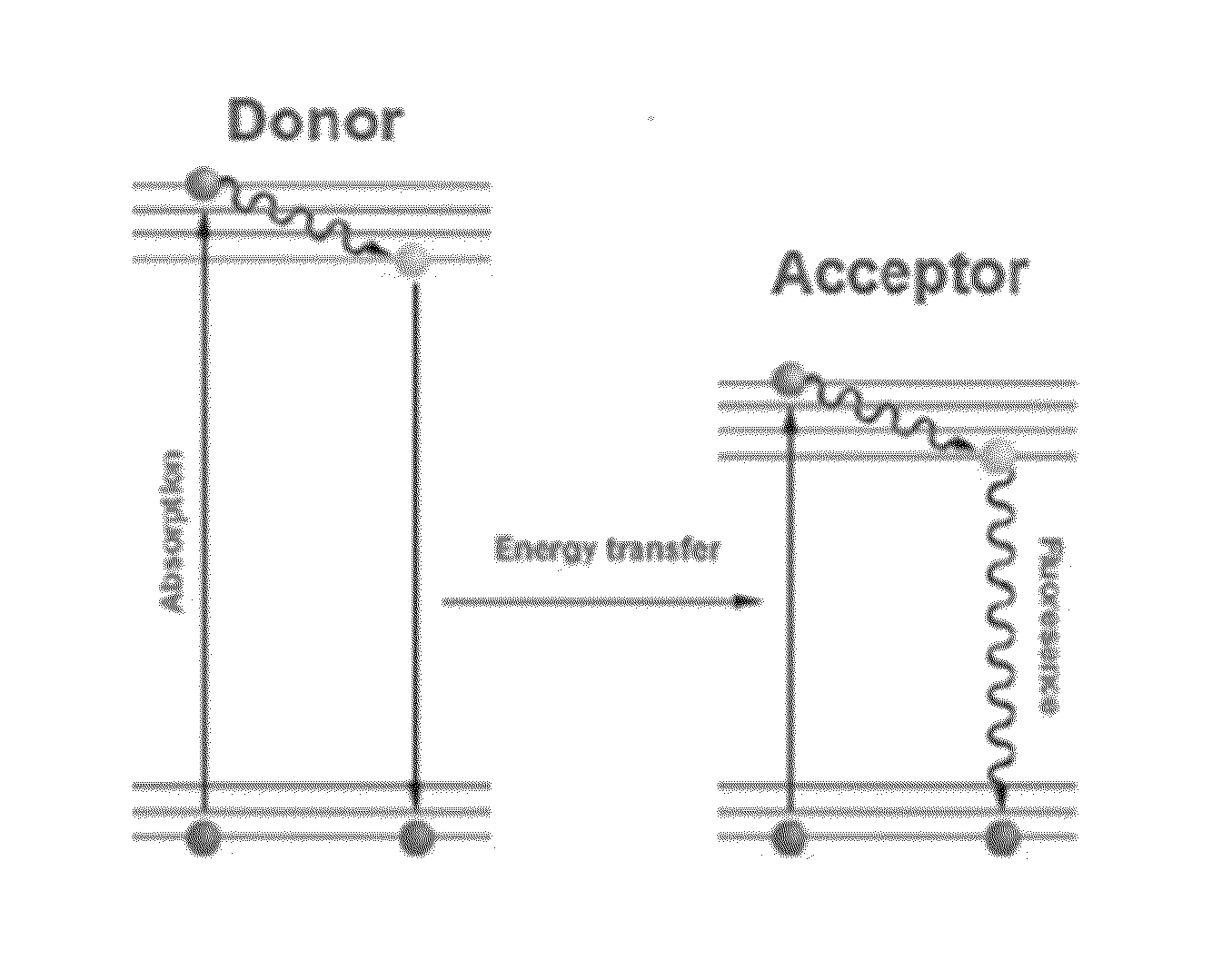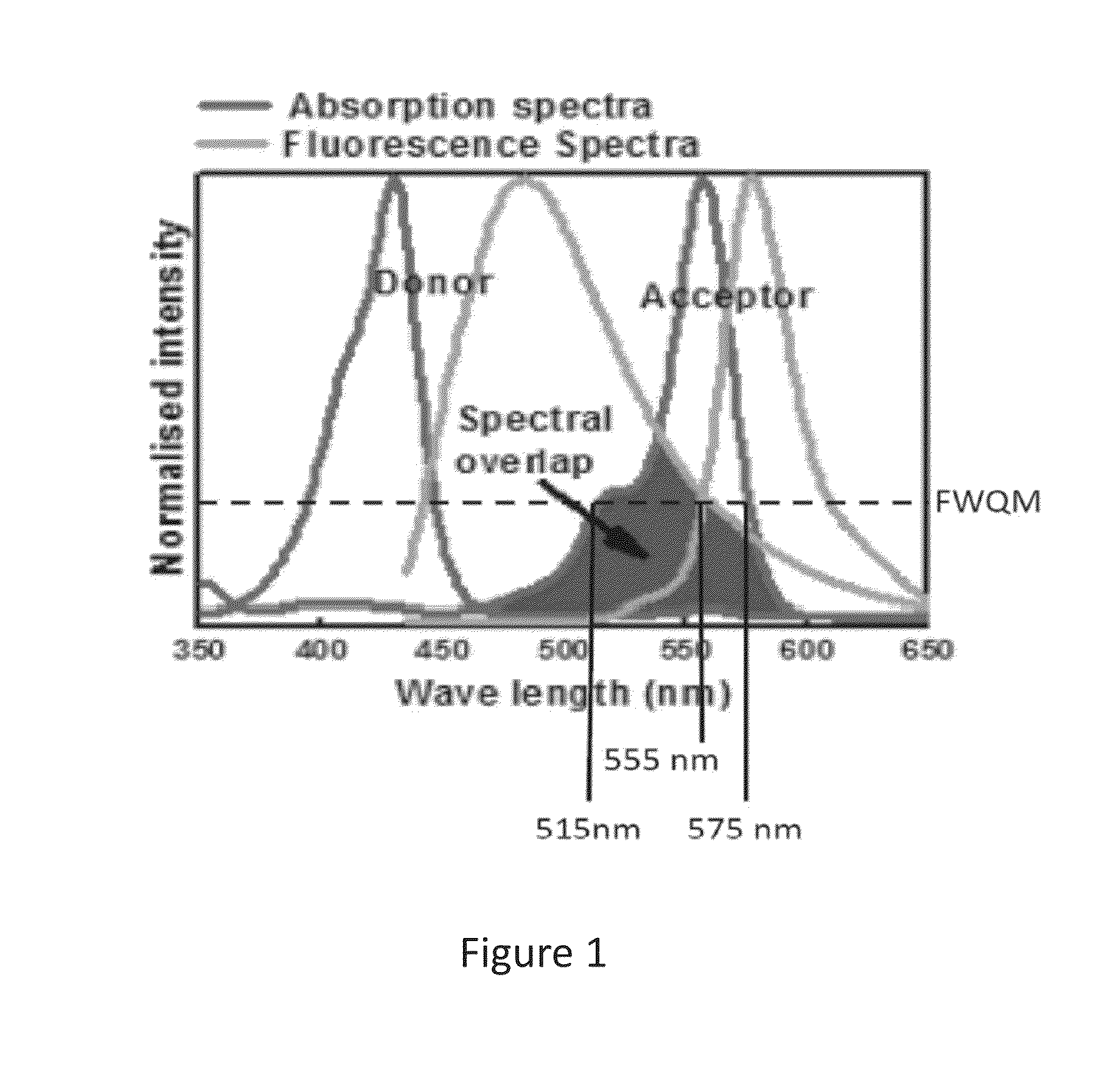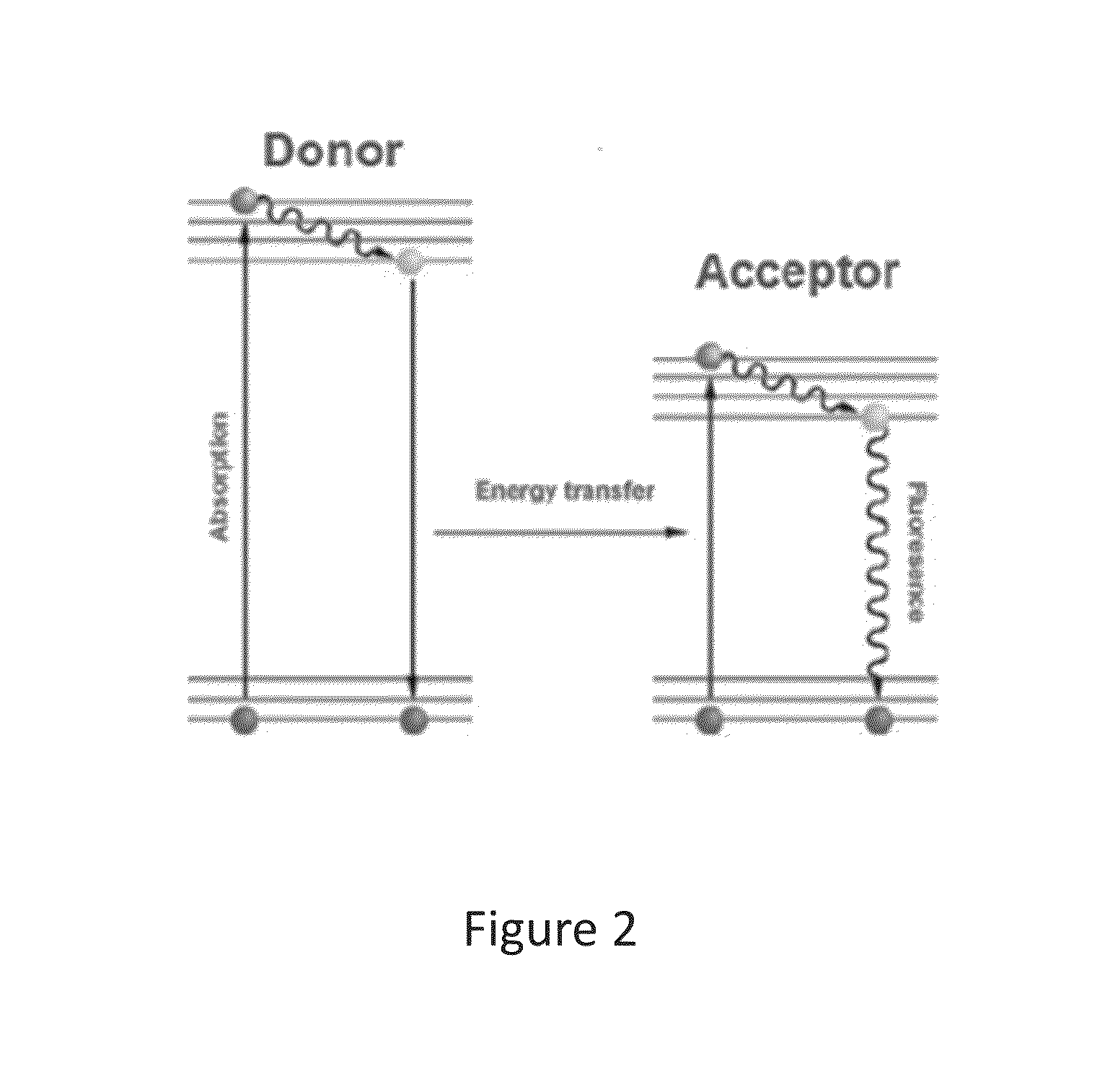Biophotonic materials and uses thereof
a biophotonic material and material technology, applied in the field of biophotonic materials, can solve the problems of low therapeutic efficacy of existing regimens, poor selectivity, and associated undesired side effects, and achieve the effect of promoting skin rejuvenation and skin rejuvenation
- Summary
- Abstract
- Description
- Claims
- Application Information
AI Technical Summary
Benefits of technology
Problems solved by technology
Method used
Image
Examples
example 1
Preparation of an Exemplary Cohesive Biophotonic Material
[0195]
% in Composition(wt / wt)Water60-95Glycerine 5-15Propylene Glycol2-6Sodium hyaluronate2-8Urea peroxide1-5Glucosamine sulfate0.5-4 Carbopol0.1-2 First Chromophore 0.001-0.01 Second chromophore0.001-0.01
[0196]Phase A was prepared by mixing water, Eosin Y, Rose Bengal and Glucosamine sulphate. Phase B (Water, Glycerin, Propylene glycol, Urea peroxide, Carbopol polymer) was then added to Phase A, and mixed until a light viscous liquid was obtained. Phase C (Sodium hyaluronate) was then added to the mixture, and mixed until a homogenous thick gel was obtained.
[0197]The homogenous gel obtained above was spread onto a flat surface. The layer was covered with an aluminum sheet and was allowed to dry for 24 hours. After 24 hours, the resulting material was a cohesive gel, was elastic and easy to manipulate. It could be applied to the skin and pealed off with little or no residue remaining A 5-20% weight loss of the total weight ...
example 2
Measurement of Tensile Strength
[0198]The tensile strength of a biophotonic material formed according to Example 1 may be measured by the following method. Pieces of the biophotonic material having a size of about 2 cm×2 cm, and 2 mm thickness are prepared. The tensile strength of the biophotonic material pieces is then measured using a 500N capacity tabletop mechanical testing system (#5942R4910, Instron) with a 5N maximum static load cell (#102608, Instron). Pneumatic side action grips are used to secure the samples (#2712-019, Instron). A constant extension rate of 2 mm / min until failure is used and the tensile strength is calculated from the stress vs. strain data plots. Stress-strain testing is detailed by standards-setting organizations, notably the American Society for Testing and Materials (ASTM). A preferred method is ASTM D638.
example 3
Measurement of Tear Strength
[0199]The tear strength of a biophotonic material formed according to Example 1 may be measured by any American Society for Testing and Materials (ASTM) methods known in the art. A preferred method is ASTM D1004.
PUM
| Property | Measurement | Unit |
|---|---|---|
| thickness | aaaaa | aaaaa |
| wavelength | aaaaa | aaaaa |
| wavelength | aaaaa | aaaaa |
Abstract
Description
Claims
Application Information
 Login to View More
Login to View More - R&D
- Intellectual Property
- Life Sciences
- Materials
- Tech Scout
- Unparalleled Data Quality
- Higher Quality Content
- 60% Fewer Hallucinations
Browse by: Latest US Patents, China's latest patents, Technical Efficacy Thesaurus, Application Domain, Technology Topic, Popular Technical Reports.
© 2025 PatSnap. All rights reserved.Legal|Privacy policy|Modern Slavery Act Transparency Statement|Sitemap|About US| Contact US: help@patsnap.com



